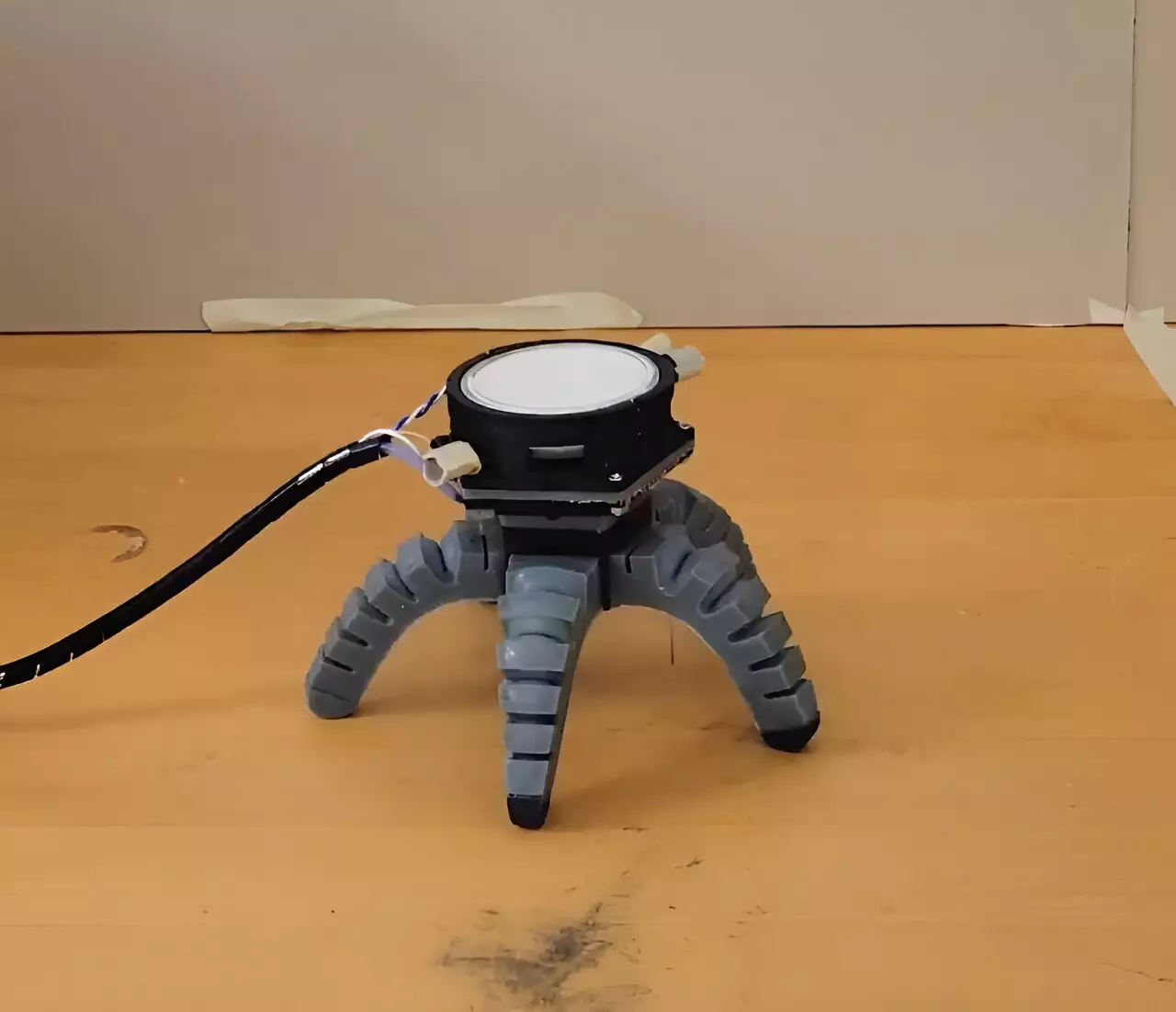In recent years, the integration of biological systems and technology has sparked fascination among engineers and scientists alike. The emergence of “biohybrid” robots, which incorporate living materials to enhance functionalities, presents a promising frontier in robotics. Recent research from Cornell University introduces an innovative approach by using fungal mycelia as a key component in controlling these robots effectively, potentially revolutionizing the way machines interact with their environments.
This unique intersection between the worlds of robotics and mycology opens a rich avenue for robots to adapt to their surroundings more fluidly than traditional mechanisms. Researchers, led by Anand Mishra, uncovered that mycelia—essentially the ‘roots’ of mushrooms—possess intrinsic electrical signals that could serve as intuitive control systems for robots. Thus, the innovation does not merely use an organic material; it taps into the biological capacity of living organisms to respond to stimuli, paving the way for a new generation of autonomous robots.
In their study published in *Science Robotics*, the Cornell team emphasizes the significance of using mycelia as sensory and controlling agents. Unlike synthetic sensors, which are often limited to singular functionality, mycelial networks can respond dynamically to multiple signals, allowing the robots to react in real time to environmental changes. As Mishra articulates, living systems can react to an array of stimuli such as touch, light, and even unexpected conditions—an advantage that could significantly enhance robotic performance in unpredictable environments.
This biohybrid technology not only illustrates the remarkable capabilities of mycelial structures but also challenges conventional designs that are typically reliant solely on synthetic materials. The imbued presence of living systems within robotics propels the potential for smarter machines that can operate autonomously, making real-time decisions based on their surroundings. This leads to not just a mechanical or artificial response but a more organic interaction where machines can ‘perceive’ their environment similarly to living beings.
Creating these innovative robots required more than just sourcing materials—it called for a multidisciplinary approach. The project drew upon expertise from engineering, electronics, mycology, and neurobiology, illustrating the complexity of integrating living systems into robotic design. Each aspect of the research—from understanding the electrical signals that traverse mycelial membranes to establishing clean cultures for experimentation—depended on a collaborative effort among specialists in various fields.
Mishra’s consulting with experts like Bruce Johnson in neurobiology was crucial in understanding the signal processing involved with mycelial growth. Learning to cultivate uncontaminated mycelial cultures through guidance from plant pathology specialists like Kathie Hodge ensured the reliability of the biological component. The meticulousness of this multidisciplinary approach highlights foundational care in developing not just functional robots but ones that potentially embody a new understanding of life and technology.
Experimentation and Outcomes
The experiments conducted with the designed biohybrid robots—a spider-like soft robot and a wheeled variant—demonstrated the effectiveness of using mycelial signals for control. The robots exhibited movements that aligned with the natural electrical spikes emitted by the mycelia, showcasing an adaptability influenced by their biological component. Furthermore, the research team successfully stimulated the robots with ultraviolet light, causing shifts in their movements, validating the mycelia’s responsiveness to external stimuli. These findings marked significant strides in demonstrating how living systems can evolve robotic movements in response to environmental changes.
Additionally, the experiments took a fascinating turn where the researchers were able to override mycelia’s natural signals. This not only underscores the potential for control over biohybrids but also hints at a deeper understanding of how electronic systems may harmonize with biological organisms in unforeseen ways. Such advances could lead to comprehensive applications across various fields, including environmental monitoring and agriculture, where robots might autonomously assist by sensing soil conditions and adjusting their actions accordingly based on what they ‘experience.’
The broader implications of integrating living systems in robotic frameworks extend into realms beyond immediate functional capabilities. As Mishra pointed out, this research propels the notion of establishing genuine connections between robotic systems and biological entities. The ability to interpret signals from living organisms not only enriches robotic interaction but also sheds light on environmental stresses and biological nuances that were previously imperceptible.
As technology evolves, the potential to develop sophisticated biohybrid robots could lead to profound achievements in sustainability, enhancing human capabilities while reducing ecological footprints. This research serves as a precursor to more complex interdisciplinary inventions, pushing the boundaries on what machines can accomplish when infused with the intrinsic qualities of life. As we stand at the threshold of this exciting frontier, the synergy between robotics and biology promises a future wherein machines don’t just emulate life but genuinely engage with it.

